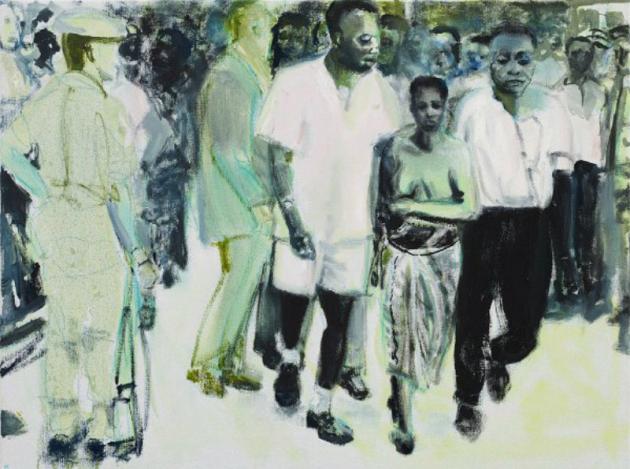Tate Modern is presenting the exhibition ‘Marlene Dumas: The Image as Burden’ in February of this year. The title of the exhibition is taken from ‘The Image as Burden’ 1993, a small painting depicting one figure carrying another. As with many of Dumas’s works, her choice of title deeply affects our interpretation of the work. It hints at the sense of responsibility faced by the artist in choosing to create an image that can translate ideas about painting and the position of the artist.
The artist’s work often features intense, psychologically charged images exploring themes of sexuality, love, death and shame, often referencing art history, popular culture and current affairs. ‘Secondhand images’, the artist has said, ‘can generate first-hand emotions.’ Dumas never paints directly from life, yet life in all its complexity is right there on the canvas.
Tate Modern’s large-scale survey of the artist’s work will be the most significant exhibition of Dumas ever to be held in Europe, charting the artist’s career from the early 1970s to the present. Opening in February 2015, it will offer a compelling overview of the artist’s large oeuvre of work, and will explore the physical and psychological reality of human existence and the importance of the painted image. The show will bring together over 100 of her most important and iconic paintings and drawings, her experimental collaged works and her most recent canvases.
The artist’s approach to making art combines the personal with the public, painting those closest to her – such as her daughter in ‘Helena’s Dream’ 2008 – alongside images of such famous and infamous faces as Amy Winehouse, Princess Diana, Osama bin Laden and Phil Spector. Dumas is unafraid to address controversial subjects, from a colonial war for independence in her work: ‘The Woman of Algier’s 2001 to a political assassination in the piece: ‘The Widow’ 2013 – as well as themes derived from newspaper articles, religious imagery, the adult entertainment industry and the artist’s imagination. Simultaneously drawing upon the world around her and her own experiences, Dumas reflects on contemporary anxieties about love and death, gender and sexuality, and mass media and celebrity.
Dumas came to prominence in the mid-1980s for her series of paintings and drawings primarily based on the human form. Many of her portraits are drawn from her own photographs and media images, such as ‘Evil is Banal’ 1984 and ‘Martha – Sigmund’s Wife’ 1984.
The exhibition will show how the artist’s nuanced approach to subject matter, photography and paint itself can first be found in the early works Dumas made in her home nation of South Africa. Visitors will be able to trace her mix of immediacy and intimacy from these rarely-exhibited works, through to the artist’s seminal paintings, and across four decades of her career.
The results of the artist’s practice are often intimate and at times controversial, where politics become erotic and portraits become political. Dumas plays with the imagination of her viewers, their preconceptions and fears.
For the artist it is important ‘to give more attention to what the painting does to the image, not only to what the image does to the painting.’ In an age dominated by the digital image and mass media, Dumas cherishes the physicality of the human touch with work that could be seen as a testament to the potency of painting.
‘Marlene Dumas: The Image as Burden’ – Tate Modern – February 2015

